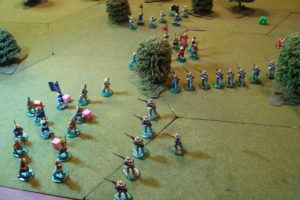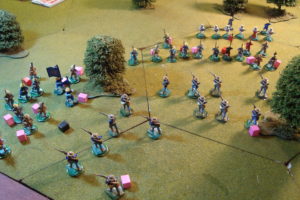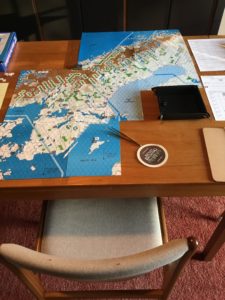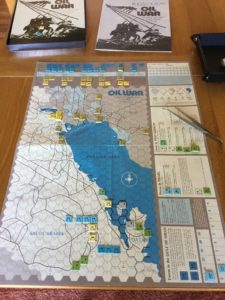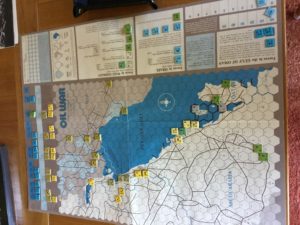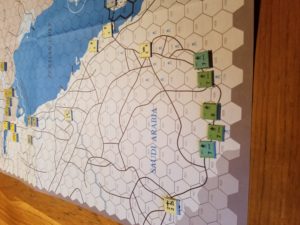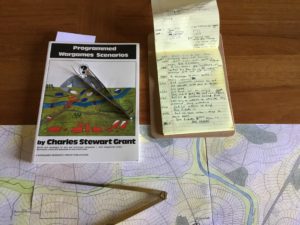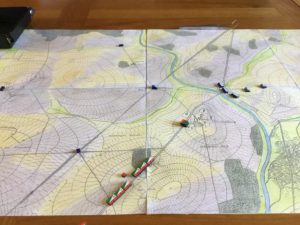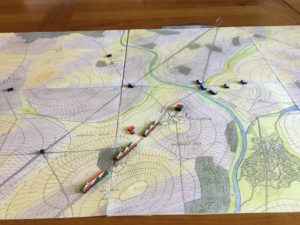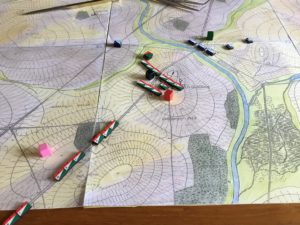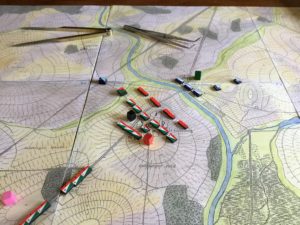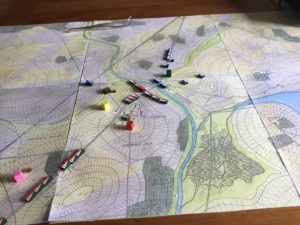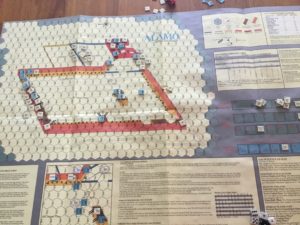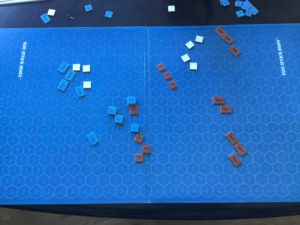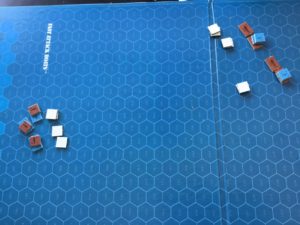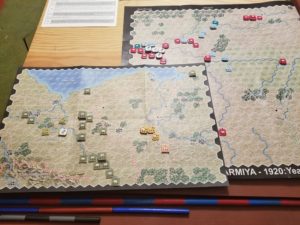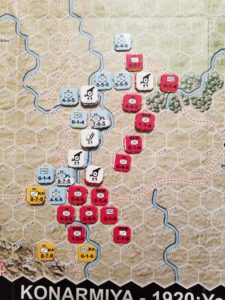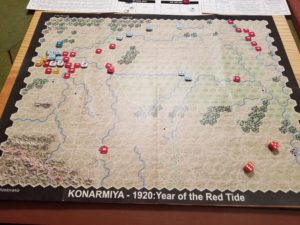Been slowly but steadily working with the game. Solo play requires a lot of imagination, assisted by “Yes, No, Maybe” dice and directional dice.
A simple scenario. A Marine squad is tasked with clearing a wooded area known to contain groups of Boxers. For the Marines, it wasn’t a wooded area, but a hornet’s nest.
Random die rolls generated three groups of Boxers the moment Marines entered the woods. It was a wild melee.
I’m using old wooden Risk cubes to denote light (pink) and serious (red) wounds. Pinned troops are marked with a brown cube, with shaken troops getting a yellow cube. Deaths are shown with black cubes.
The Marines fought well, and the Boxers were resilient….maybe because I messed up the retreats from melee. It was an entertaining slugging match, allowing me the opportunity to work with both Action and Terrain decks.
The two large groups of Boxers withdrew after heavy casualties. However, the one band of fanatical riflemen remain.
